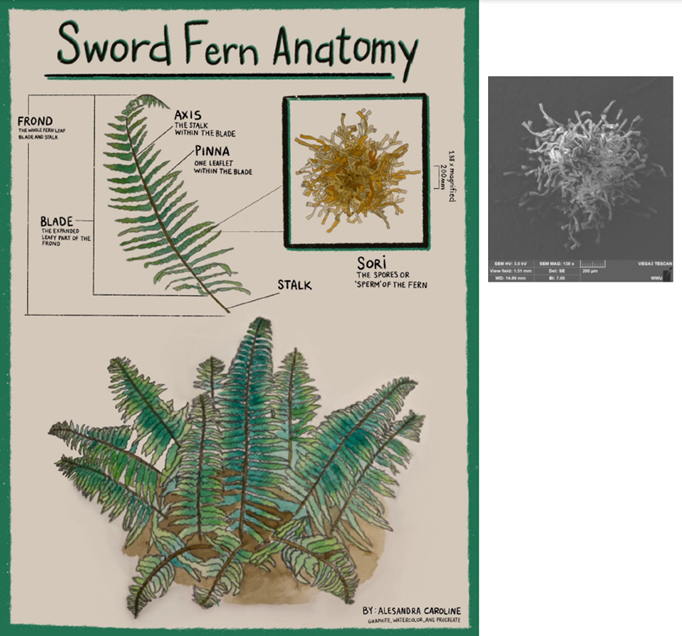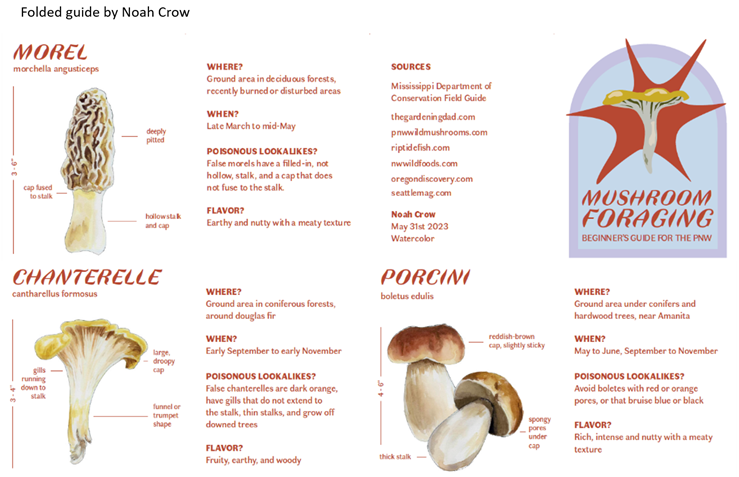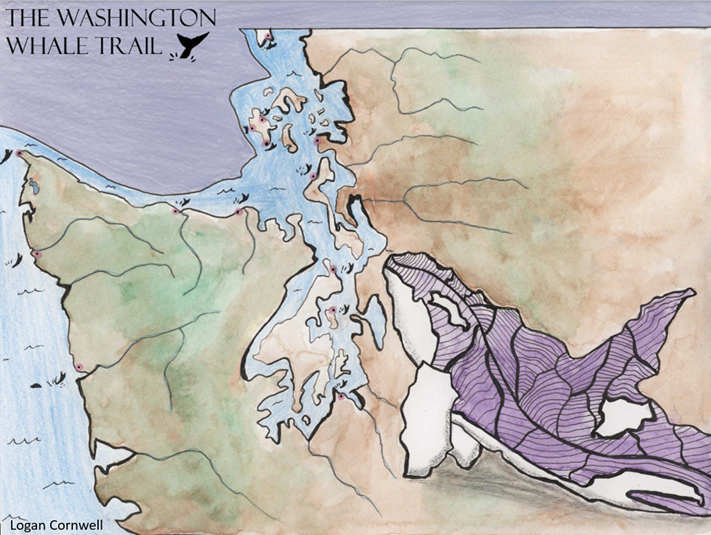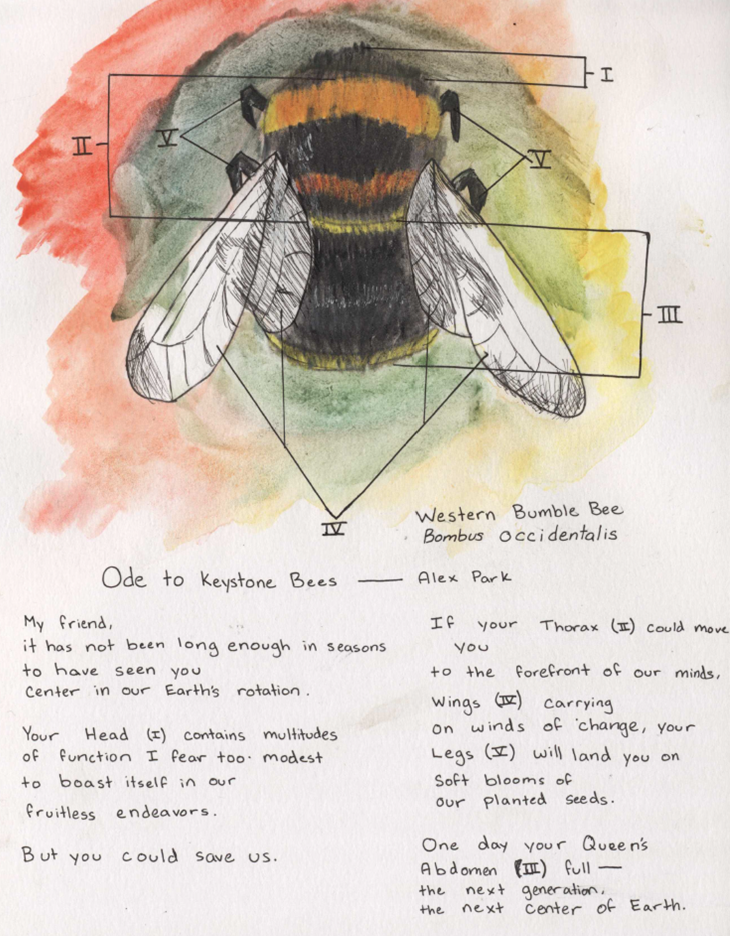Communicating scientific topics through art
August 31, 2023
Spring 2023 brought a new course offering to the Honors Department. In Scientific Illustration, an Honors Seminar taught by Biology Department faculty member, Georgianne Connell, students learned how to use illustrations to communicate scientific findings to the public through two forms: as infographic art for educational purposes and as thematic art to create an interest about a topic. Students used many of the resources available at Western to guide their studies. They worked directly with plant and animal specimens through use of the Vertebrate Collection and Insect Collection, housed in the Biology department, and the Scanning Electron Microscope (SEM) in Environmental Sciences. They even spent a day sketching directly from nature in the Sehome Hill Arboretum.

Sword Fern Anatomy by Alesandra Caroline.
Medium used: Graphite, Watercolor, Procreate
Students learned how art can help make science accessible to a wider audience. Jordan Sawyer, B.S. Biology, Class of 2023, commented, “It gave me an appreciation for a lot of scientific illustrations I've seen. I had to learn quickly how to present the information I wanted to convey in a clear way, both visually and in written form, and that can be difficult! It was also interesting to view the world in a different way - for example, looking at a bee and seeing the shapes it's comprised of, instead of just seeing a bee.”
Evie MacLeod, an Electrical Engineering major, is learning how to apply this in other ways. MacLeod said, “It helped me to think more critically about the visual aids I use when presenting information.”

Mushroom Foraging: Beginner's Guide for the PNW by Noah Crow, B.S. Industrial Design, Class of 2023. Medium used: Watercolor and digital illustration
Eleanor Scott, an English/Lit major, stated “Whenever I look at a tree, a leaf, or a flower, there’s this part of my brain that starts thinking: I wonder how I would draw that? Practicing this art form had made me see the world anew in this way, and it’s great to know I now have the capabilities to try depicting it on the page.”
Scott and others commented that they enjoyed being pushed to think in new ways. “I like that this course challenged me. As an English Lit major with little artistic or scientific disposition, this class forced me out of my comfort zone. I learned how to shade, layer colors, and accurately represent proportions. Also, I hadn’t worked with microscopes since high school, so it was fun using them again!” Eleanor Scott said.
In the course, students practiced many art techniques, however, a background in art was not required. They learned to decipher which illustrative techniques could best convey their topic. Students from many backgrounds; science, art, and non-science/art majors alike, wove knowledge from their respective studies and other outside interests into their illustrations. Noah Crow, B.S. Industrial Design, Class of 2023, commented, “I think it was super cool to be around people from all different backgrounds in the class. I felt a lot less pressure to make something perfect.” Joel Rink, an Environmental Science major, agreed, “I really liked how supportive everyone was of each other.”

The Washington Whale Trail by Logan Cornwell.
Medium used: Watercolor, Colored Pencil, Ink
Four illustrations from the course are presented throughout this article. Interested in seeing more? 8 selected works from students in the Scientific Illustration class are currently on display in the Biology Building 3rd Floor foyer adjoining the main staircase.

Ode to Keystone Bees by Alex YuTing Park. Medium used: Watercolor, Colored Pencil, Pen